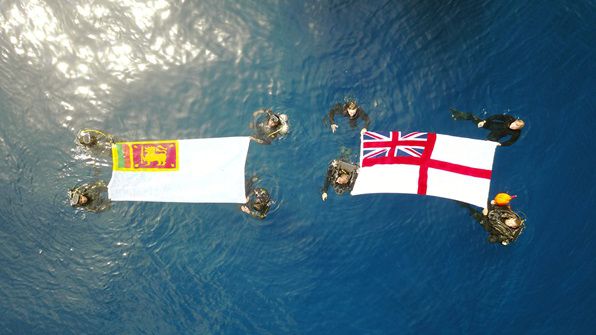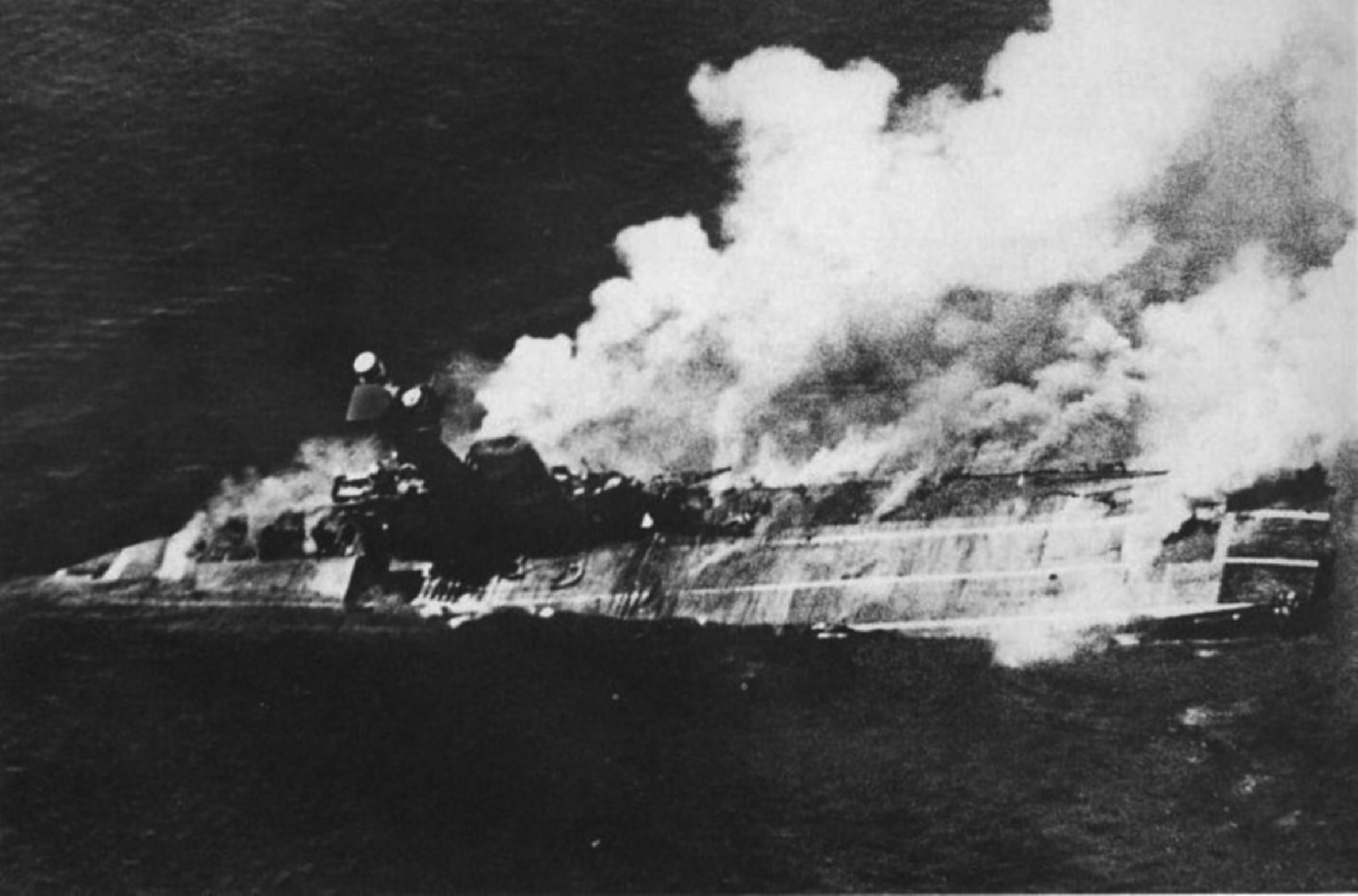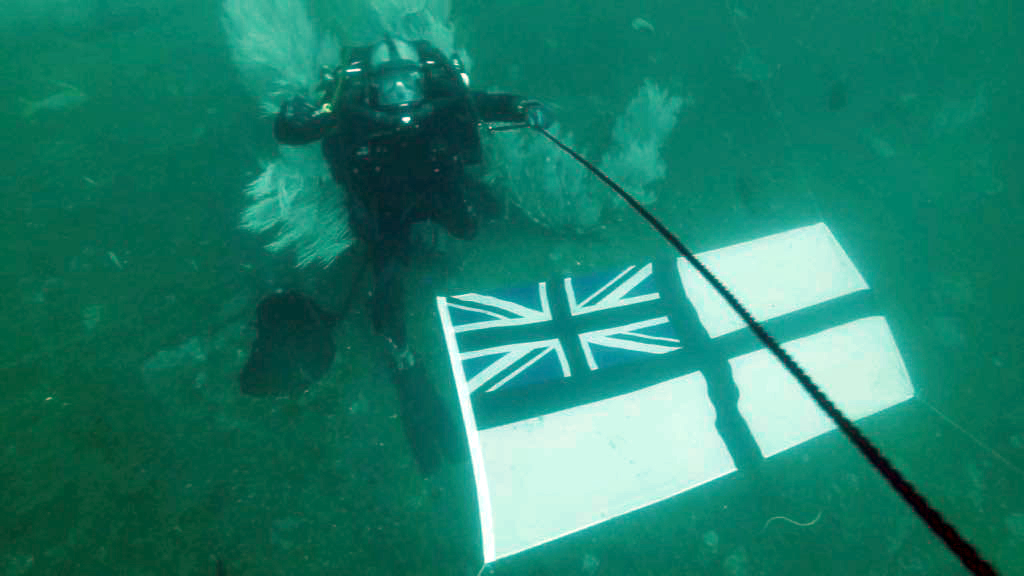Divers Revisit Wreck of the First Purpose-Built Carrier

Two hundred feet below the surface of the Bay of Bengal the Royal Navy's standard 'flies' on HMS Hermes for the first time in 75 years. Not since April 9, 1942 have Royal Navy sailors seen the outline of Britain's first purpose-built carrier.
A joint training exercise with the Sri Lankan Navy gave divers from Fleet Diving Unit 2 a chance to pay their respects on Hermes' wreck rather than on the surface above. The Sri Lankans are keen to master mixed-gas diving, one of the many skills and abilities Royal Navy divers possess, so a team flew out to Trincomalee Naval Base to share their expertise and carry out joint dives.?
Although there were aircraft carriers before Hermes, they started life as other types of ship. Hermes was designed and built from the outset as a carrier, and spent most of her career in the Mediterranean and Far East between the world wars. Even though she was reduced to a training ship in 1938, the onset of war forced a return to front-line duties. In 1942, she was sent to the Indian Ocean to support he Allied invasion of Madagascar.
When Japanese bombers threatened the port of Trincomalee in the north of the island, Hermes sailed to escape them. Salvation was short lived. The carrier and her Australian escort, destroyer HMAS Vampire, barely got 65 miles before she they were pounced upon about 20 miles off the port of Batticaloa.
More than 80 Japanese dive bombers escorted by nine Zero fighters attacked, opposed by just half a dozen sluggish RAF Fairey Fulmar fighters and the anti-aircraft gunners on both ships. Hermes succumbed in just 20 minutes. She was hit 40 times and sank, taking 307 men down with her. The bombers then turned their attention to Vampire, breaking the ship in two; amazingly, just eight of the destroyer’s sailors were killed.
 Hermes going down, April 9, 1942
Hermes going down, April 9, 1942
Hermes' wreck lies over 180 feet down, which meant only one section – the bilge keel – was accessible for the diving teams. "This is the first time that Royal Navy personnel have been able to pay their respects in such a way in the 75 years since Hermes was tragically sunk," said Chief Petty Officer Ward Peers, second-in-command of Fleet Diving Unit 2. "Laying the ensign was a great honour for everyone involved.”

This article appears courtesy of Royal Navy News and may be found in its original form here.
The opinions expressed herein are the author's and not necessarily those of The Maritime Executive.
